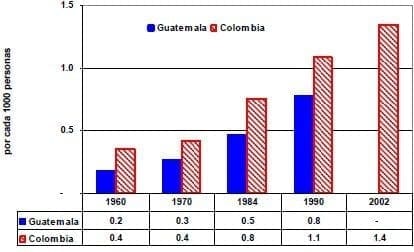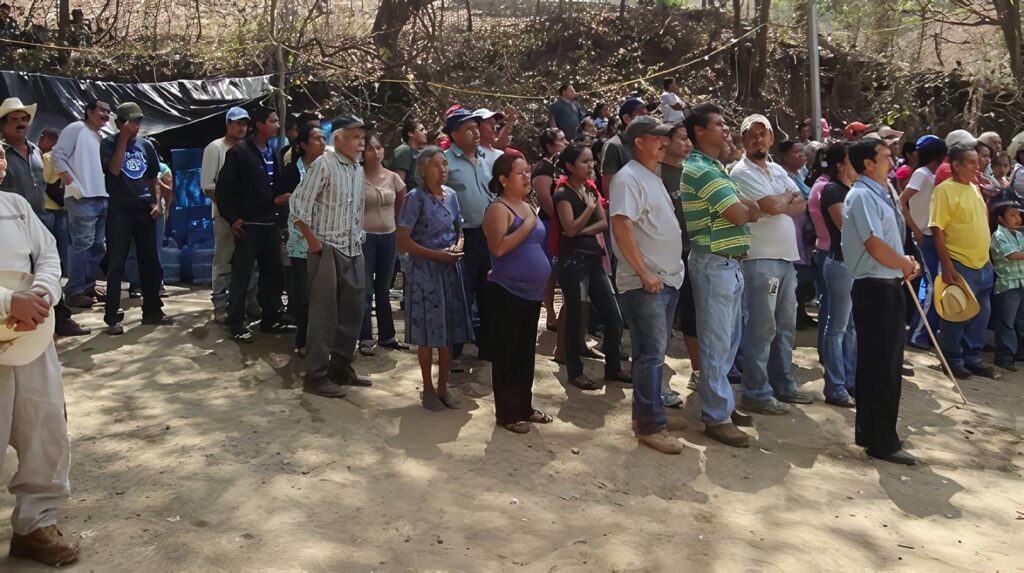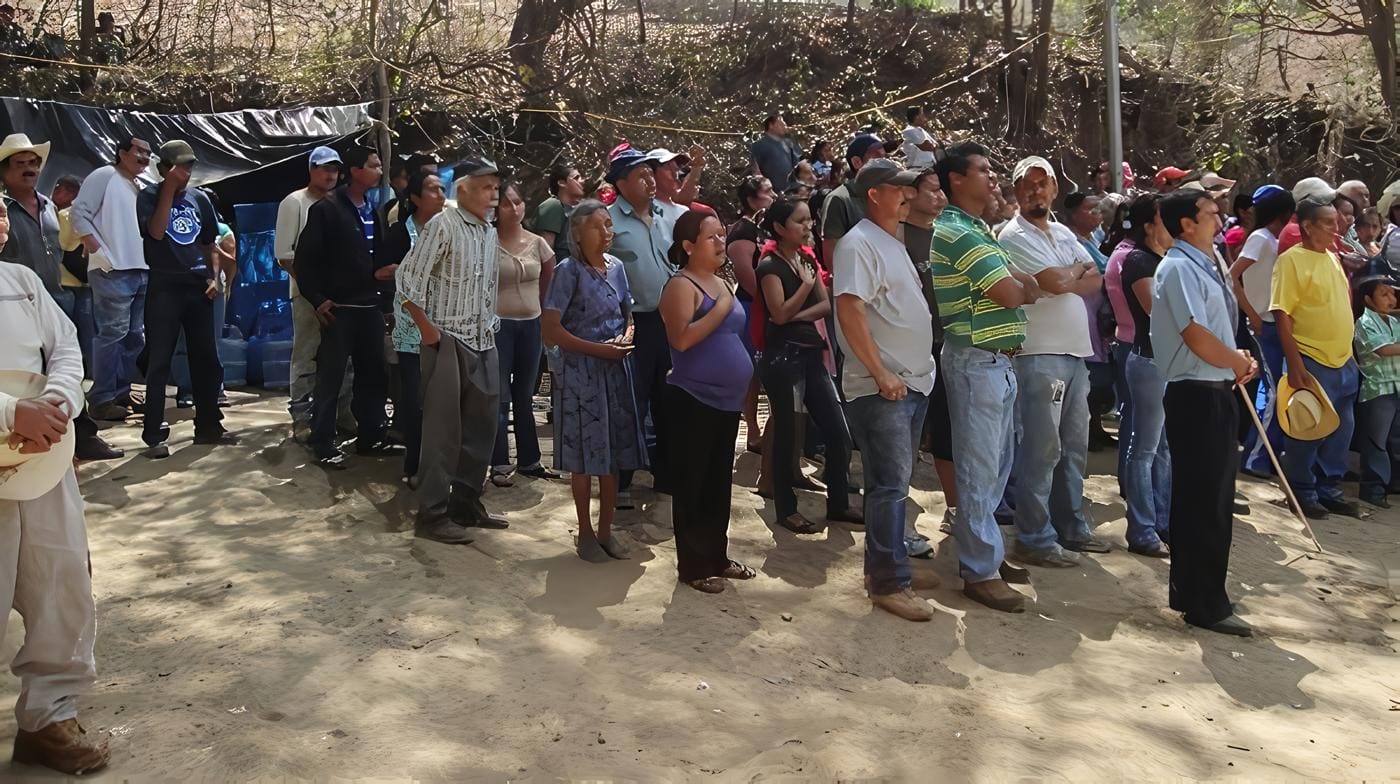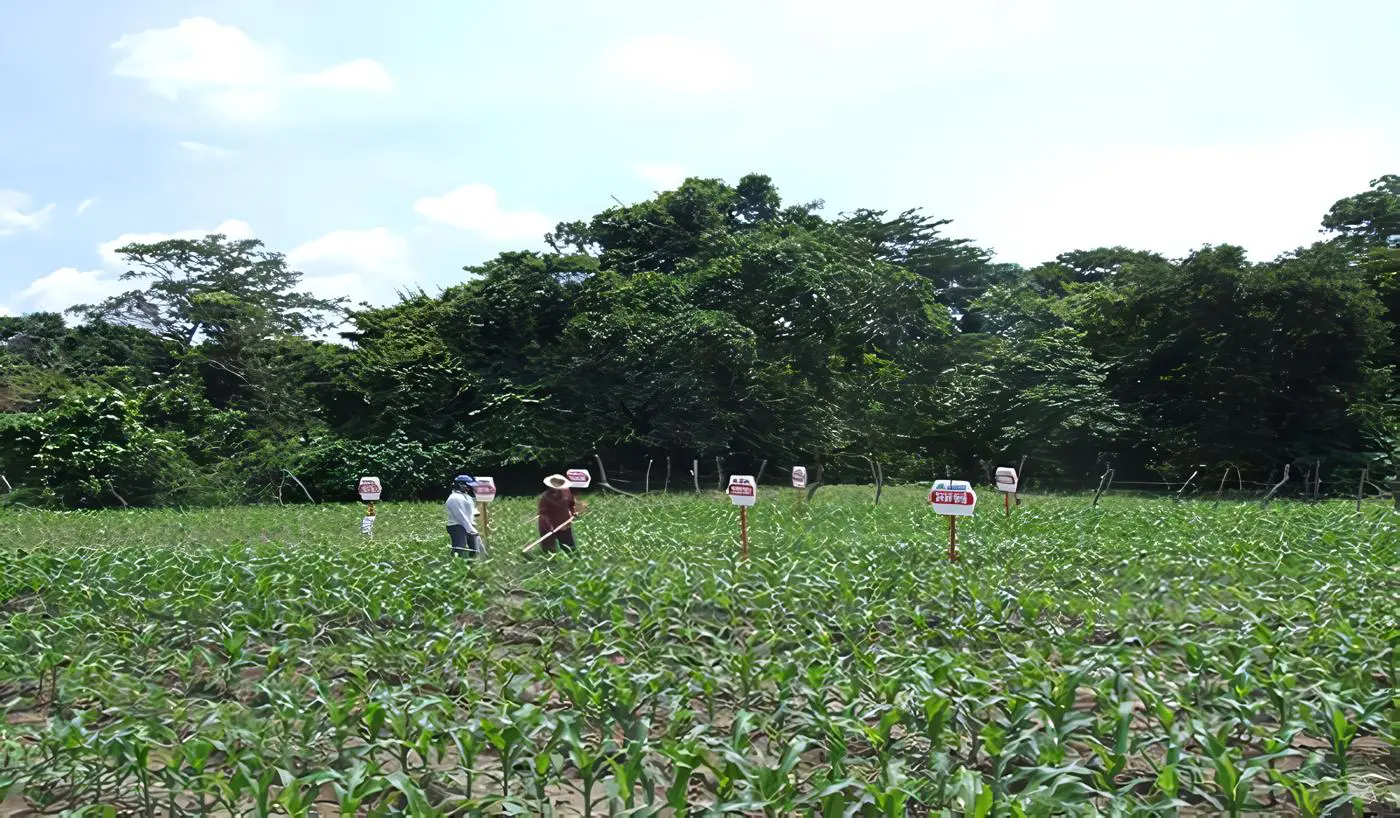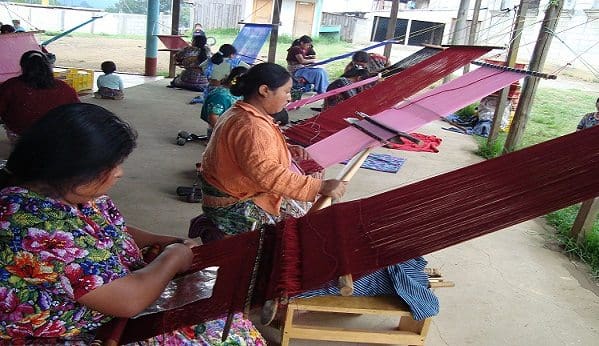Conozca los indicadores sociales y de población entre Colombia y Guatemala:
Población total
Fuente: Banco Mundial
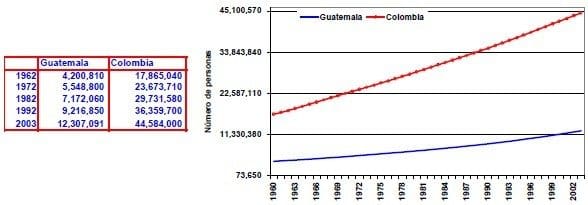
Población rural
Fuente: Banco Mundial

Población rural (% de la población total)
Fuente: Banco Mundial

Población urbana
Fuente: Banco Mundial
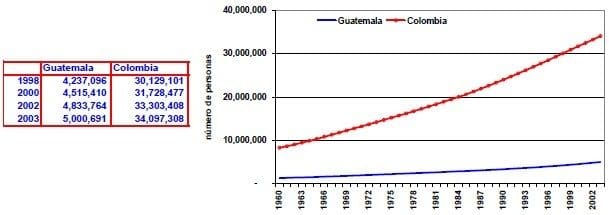
Población urbana (% de la población total)
Fuente: Banco Mundial
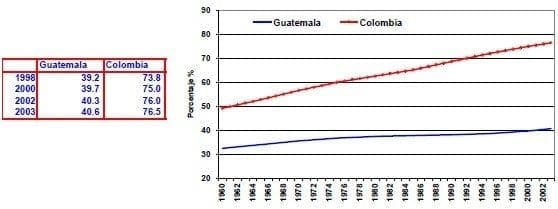
Tasa bruta de natalidad (por 1,000 habitantes)*
Fuente: Banco Mundial
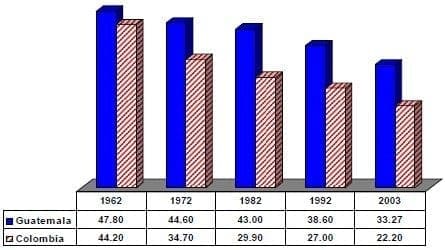
* Crude birth rate indicates the number of live births occurring during the year, per 1,000 population estimated at midyear.
Tasa bruta de mortalidad (por 1,000 habitantes)*
Fuente: Banco Mundial
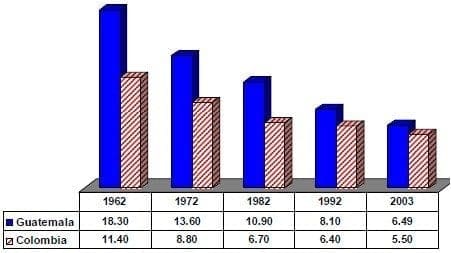
* Crude death rate indicates the number of deaths occurring during the year, per 1,000 population estimated at midyear.
Expectativa de vida al nacer (años)
Fuente: Banco Mundial
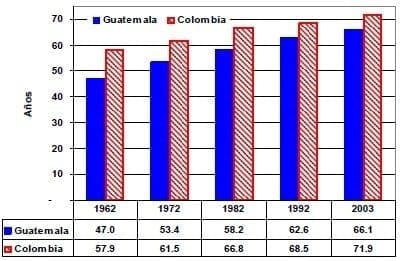
* Life expectancy at birth indicates the number of years a newborn infant would live if prevailing patterns of mortality at the time of its birth were to stay the same throughout its life.
Tasa de mortalidad infantil (por cada 1,000 nacimientos)
Fuente: Banco Mundial
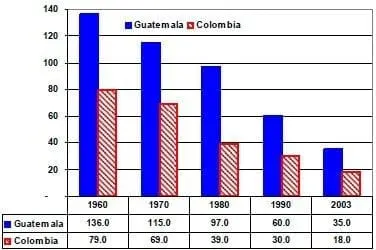
* Infant mortality rate is the number of infants dying before reaching one year of age, per 1,000 live births in a given year.
Porcentaje de ingresos por grupo de población *
Fuente: Banco Mundial
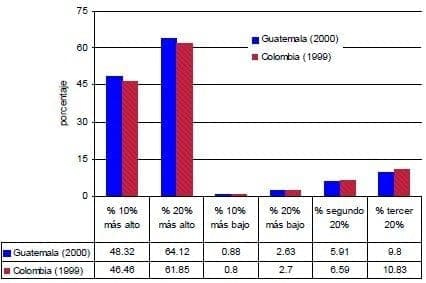
* Percentage share of income or consumption is the share that accrues to subgroups of population indicated by deciles or quintiles
Tasa de instrucción del total de adultos (% de la población mayor de 15 años)
Fuente: Banco Mundial
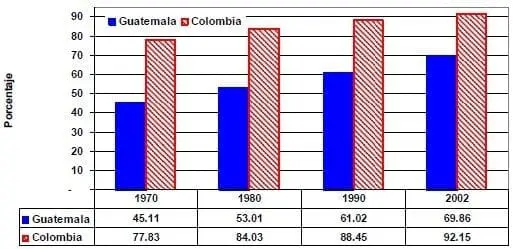
Indicadores sociales entre Colombia y Guatemala
Tasa de estudiantes con educación primaria completa (% del total del grupo edad relevante)
Fuente: Banco Mundial
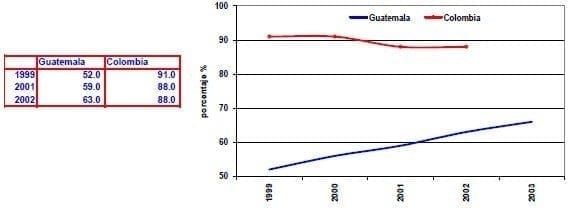
Compensación a los trabajadores (como % de los costos)*
Fuente: Banco Mundial
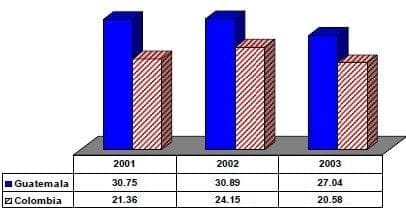
* Compensation of employees consists of all payments in cash, as well as in kind (such as food and housing), to employees in return for services rendered, and government contributions to social insurance schemes such as social security and pensions that provide benefits to employees
Inmunización DPT (% de niños entre 12 y 23 meses)*
Fuente: Banco Mundial

Child immunization measures the percentage of children ages 12-23 months who received vaccinations before one year of age. A child is considered adequately immunized against diphtheria, pertussis (or whooping cough), and tetanus (DPT) after receiving three doses of vaccine.
Médicos (por cada 1,000 personas)
Fuente: Banco Mundial
